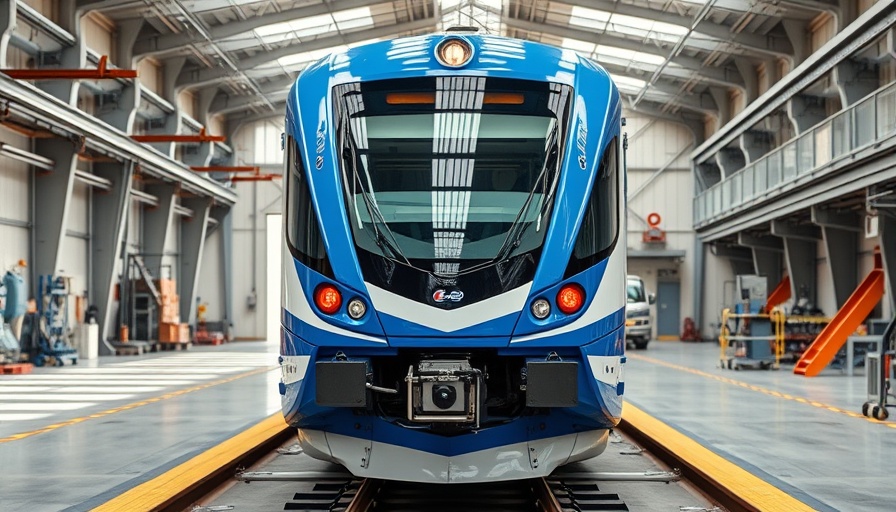
Big Changes Coming to the DLR: What You Need to Know
The exciting introduction of 54 new Docklands Light Railway (DLR) trains has been announced by Transport for London (TfL), yet a significant detail has emerged: these new trains will not be opening their doors to passengers just yet. Starting from September 1, travelers will spot these new, sleek trains running the routes from Stratford International to Beckton, but they will be marked "not in service." This unique feature helps clarify to commuters that these trains are solely for testing and integration into the DLR network.
Investment in a Sustainable Future
This sizable investment in the DLR fleet underscores a broader trend towards enhancing public transport systems as part of a commitment to sustainable living. With some trains dating back over 30 years, the new DLR additions are set to offer a modernized, eco-conscious alternative. Features such as spacious walk-through carriages, air conditioning, mobile charging points, and improved accessibility speak to a present-day focus on comfort and inclusivity for all passengers. This coincides with a rising interest among young homeowners in eco-friendly living and smart homes making public transport a pivotal part of urban life.
Making Travel More Reliable
The introduction of these trains aims to improve the frequency and reliability of services crucial for areas in the Royal Docks and Isle of Dogs, neighborhoods thriving with young professionals who often rely on the DLR. In tandem, the planned extensions to Riverside and Thamesmead will make these routes even more essential in connecting London’s ever-expanding communities. As TfL integrates these new trains, scheduled closures for testing will be necessary, with updates announced to ensure travelers are informed about potential disruptions.
Tech-Driven Solutions for Future Transit
The announcement also aligns with London’s broader endeavors to enhance smart, connected homes. By investing in modern transport solutions, London prioritizes technological integration across urban initiatives. Young homeowners who are tech-savvy will benefit from improved travel conveniences, making life in London even more manageable. A focus on integrating live travel information into the new fleet will ensure passengers have up-to-date knowledge of their commutes.
Community Connection and Local Impacts
As these developments unfold, local community dynamics are likely to shift, encouraging more residents to consider living near DLR stations. This alteration may spur additional investment in local amenities and infrastructure. By improving public transport, TfL aims to enhance neighborhood accessibility, which would appeal to both current residents and potential newcomers. A strong local transport network is synonymous with cohesive community growth, allowing various initiatives to flourish.
What to Expect in the Coming Months
Expect continued communication from Transport for London as they finalize the rollout of these new trains. With advanced testing and phased integrations, it’s crucial for residents to stay connected to their local transit updates. For young homeowners and individuals eager to understand how London’s evolving transport network fits into the narrative of urban living, this moment in transit history is worth observing. The improvements alone could maximize property value and enhance market interest.
As we look ahead, if you’re eager to learn more about the DLR upgrades and how they may impact your daily life, keep an eye on future news. Enhancements in public transportation will only grow in importance as more people contribute to making London a better place to live.
 Add Row
Add Row  Add
Add 




Write A Comment